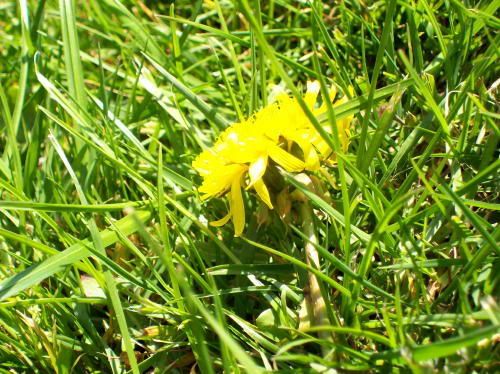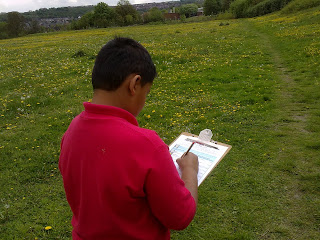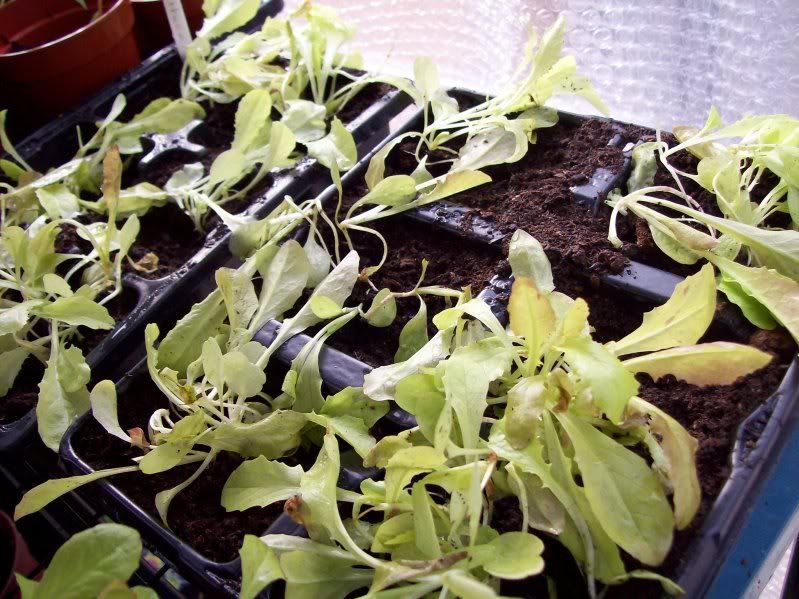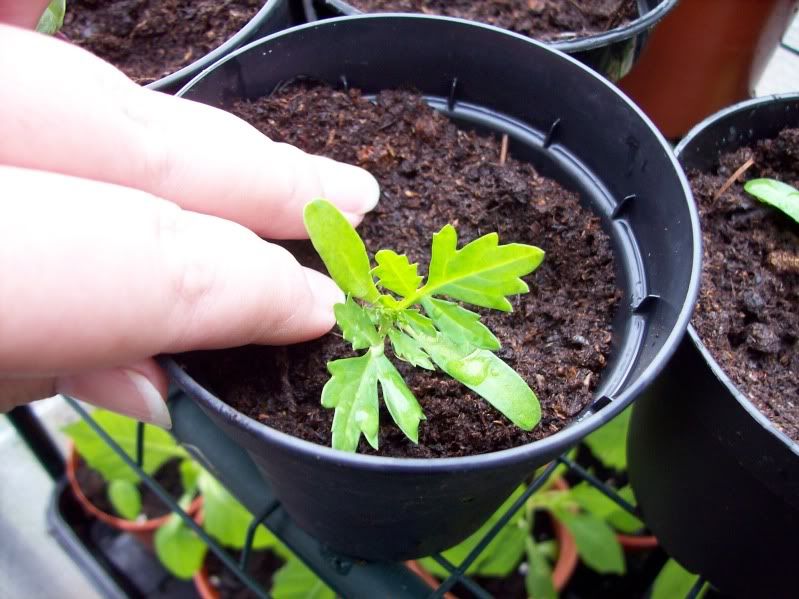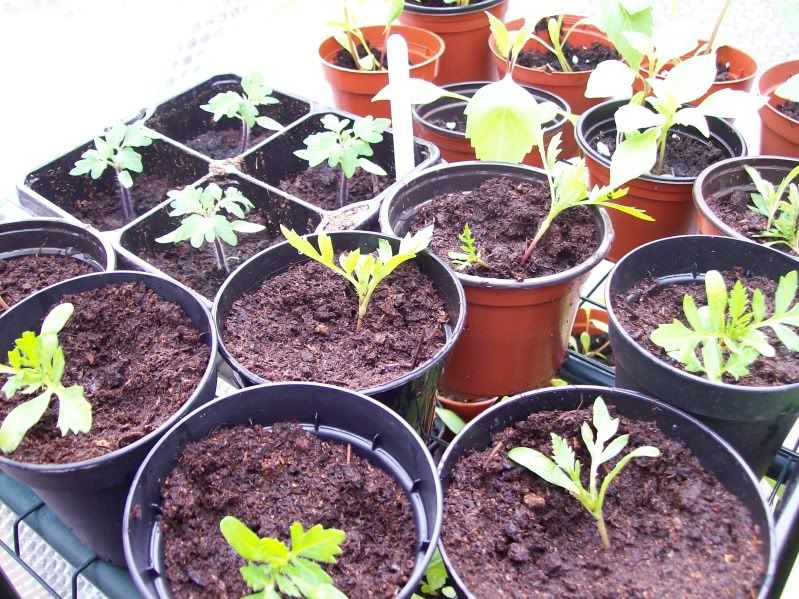Enviromental Week
As part of our Enviromental week, we're having extended gardening club time. Just as well really because the recent heat-wave has brought eveything on at a pace. Two weeks ago, this tree in the Enviromental Garden was laden with blossom. Now it is hanging onto those last blooms desperately as the majority lay in a thick pink carpet around it's roots.
If you listen hard enough, you can hear the faint cheeping of baby birds. I sat for a while, camera posed to see what birds they might be, and within minutes a Great Tit flew out. So fast was it, that for the life of me I couldn't get a decent shot. Each group of children who came to potter around in the garden this afternoon sat a while to watch the parents flit in and out of the bird box. A real treat.
The recent heat-wave has lowered the level of our pond quite considerably, making the spotting of our tadpoles much easier.
Also brought on by the warmer weather, and nestled safely in our coldframe, we have Sunflowers which will be recycled as the seeds of the spent blooms will provide a rich source of food for our bird table in the colder months. Sweet Peas for their scent of course and Pumpkins which we hope will be ready for our Halloween Disco. All will be ready for planting out after Spring Break, weather permitting.
We had a delivery recently of some young tree saplings. Among them were Holly, Dog Rose and Hawthorn. As they were in need of a drink, they have been left overnight to soak, ready for KS2 to plant them during the rest of Enviromental Week.
In the meantime, there were potatoes to earth up. They had certainly been making the most of the warmer weather and have reached the top of their containers. The compost was added, and the pupils found watering them a pleasure, naturally.
In the Infant's courtyard, the foliage of the spent Spring Bulbs had to be cut down. We've actually added more compost to these long troughs and planted our French Beans, Lettuce and some of the Nasturtiums.
The remainder of the Nasturtiums have been planted and placed close to the beans as a companion plant. This should attract aphids away from them. Marigolds have been planted for the same reason, although we intend on planting them with our tomatoes.
In the 'wheel' we have so far sown carrots and some more lettuce. After the half term holiday, we shall sow our herbs in the remaining three hubs.
We have arranged all our pots and containers in this area for now as it is nearer the outside tap. for our lovely Caretaker who will tend to them over the holiday for us.










